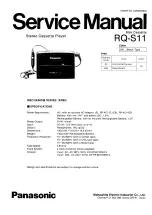
12-1
IM DR231-01E
Executing Computation
(Available with the /M1 Model)
12
12.1 Overview of the Computation Function
Type
Operator Example Description
Addition
+
001+002 Obtain the sum of the measured data of channel 001 and channel 002.
Subtraction
-
002-001
Obtain the difference of the measured data of channel 002 and channel 001.
Multiplication
*
003*K1
Multiply constant K1 to the measured data of channel 003.
Division
/
004/K2
Divide the measured data of channel 004 by constant K2.
Power
**
005**006 Take the power of measured data of channel 005 with the measured data of
channel 006.
Absolute value
ABS()
ABS(001) Obtain the absolute value of the measured data of channel 001.
Square root
SQR()
SQR(002) Obtain the square root of the measured data of channel 002.
Common logarithm LOG()
LOG(003) Obtain the common logarithm of the measured data of channel 003.
Natural Logarithm LN()
LN(004)
Obtain the natural logarithm of the measured data of channel 004.
Exponent
EXP()
EXP(005) Make the measured data of channel 005 to be x and obtain e
x
.
* +/- can be used as signs as in -(001).
Logical operators
Type
Operator Example
Description
Logical product
AND
001AND002 when channel 001=0 and channel 002=0, “0”.
when channel 001=nonzero and channel 002=0, “0”.
when channel 001=0 and channel 002=nonzero, “0”.
when both channel 001 and channel 002 are nonzero, “1”.
Logical sum
OR
001OR002
when channel 001=0 and channel 002=0, “0”.
when channel 001=nonzero and channel 002=0, “1”.
when channel 001=0 and channel 002=nonzero, “1”.
when both channel 001 and channel 002 are nonzero, “1”.
Exclusive OR
XOR
001XOR002 when channel 001=0 and channel 002=0, “0”.
when channel 001=nonzero and channel 002=0, “1”.
when channel 001=0 and channel 002=nonzero, “1”.
when both channel 001 and channel 002 are nonzero, “0”.
Logical negation NOT
NOT001
when channel 001=0, “1”.
when channel 001=nonzero, “0”.
Relational operators
Type
Operator Example
Description
Equal
.EQ.
001.EQ.002 when channel 001 = channel 002, “1”.
when channel 001
≠
channel 002, “0”.
Not equal
.NE.
002.NE.001 when channel 001
≠
channel 002, “1”.
when channel 001 = channel 002, “0”.
Greater than
.GT.
003.GT.K1
when channel 003 > constant K1, “1”.
when channel 003
≤
constant K1, “0”.
Less than
.LT.
004.LT.K10 when channel 004 < constant K10, “1”.
when channel 004
≥
constant K10, “0”.
Greater than or .GE.
003.GE.K1
when channel 003
≥
constant constant K1, “1”.
equal to
when channel 003 < constant K1, “0”.
Less than or
.LE.
004.LE.K10 when channel 004
≤
constant K10, “1”.
equal to
when channel 004 > constant K10, “0”.
Specified channel statistical operators
Type
Operator
Example
Description
Maximum value
TLOG.MAX() TLOG.MAX(001) Obtain the maximum value of the measured data of channel
001.
Minimum value
TLOG.MIN()
TLOG.MIN(002) Obtain the minimum value of the measured data of channel
002.
Max-min value
TLOG.P-P()
TLOG.P-P(003)
Obtain the P-P value of the measured data of channel 003.
Total value
TLOG.SUM()
TLOG.SUM(004) Obtain the total value of the measured data of channel 004.
Average value
TLOG.AVE()
TLOG.AVE(005) Obtain the average value of the measured data of channel 005.
* Statistical computation of the measured data from the start of the statistical computation until it is
stopped. When combining with each of the operators, MAX(), MIN(), P-P(), SUM(), and AVE(), the
value that can be specified inside the () is limited to the input channel number or the computation channel
number (refer to next page) (Example: TLOG.MAX(A01)).
Содержание DR231
Страница 12: ...10 IM DR231 01E...
















































